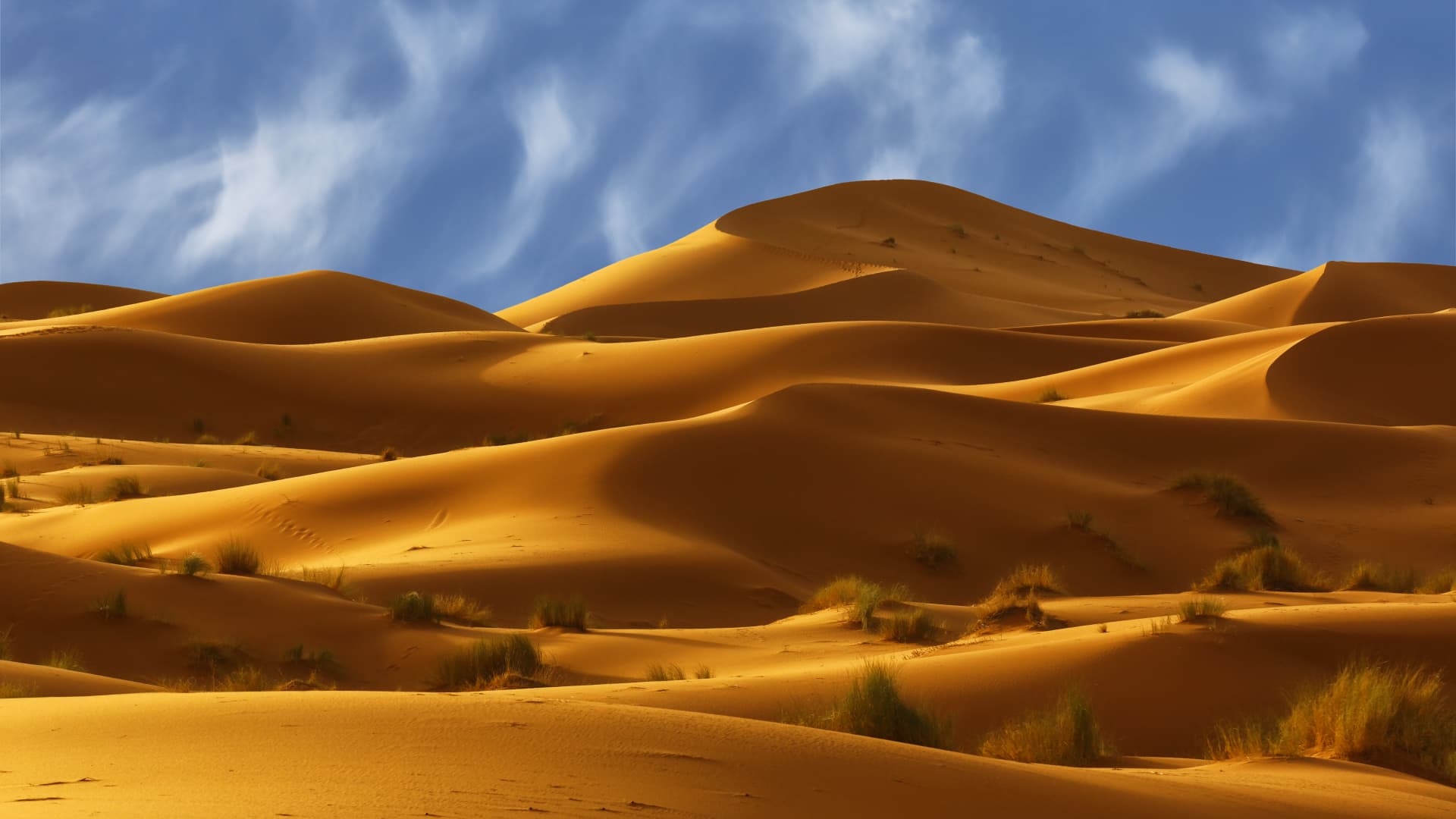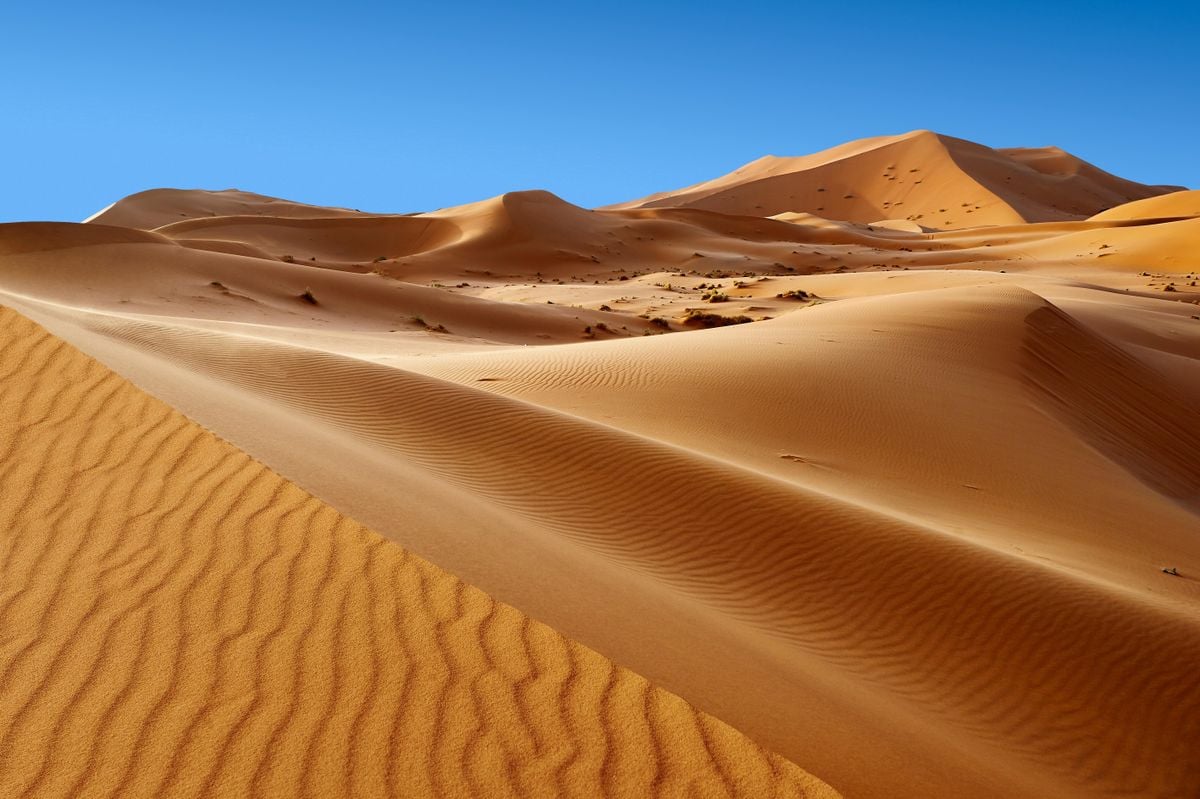There seems to be a serious misconception about why deserts are deserts ... theses are areas of descending air ... air rises along the equator and 60º latitude ... air falls at 30º latitude and the poles ... as air descends, it's relative humidity falls and thus we have very dry conditions at the surface ... both along the "horse latitudes" (or desert belts) and at the poles ...
Got that? ... falling air causes the deserts to be DRY ... and YES, Antarctica is a desert, hardly ever snows or rains there ...
Next, dry air warms and cools faster than wet air ... it has to do with the heat capacity values, air is small, water vapor is large ... thus the DRY air causes temperatures to rise higher during the day and DRY air causes temperatures to fall lower at night ...
Remember that cause-and-effect chain ... descending air causes the air to dry out, which in turn causes high daytime temperatures ... in that order and no other ...
Folks in the USA east of the Rockies know perfectly well that RHs are rarely below 10% ... usually above 50% even at the daily peak temperature ... that stops temperatures from getting too high ... yeah, I'd rather be in Barstow, CA with 115ºF and 5% RH than Atlanta, GA with 90ºF and 90% RH ... there's nothing about global warming that changes relative humidity ... in 70 years, and under the same dynamic meteorological conditions, Barstow will be 117ºF @ the same 5% RH and Atlanta will be 91ºF @ the same 90% RH ...
Unless 1/3 the world's population moves to the Sahara, this 1/3 won't experience Sahara-like conditions ... CNBC should stick to business news reporting ...

 www.cnbc.com
www.cnbc.com


